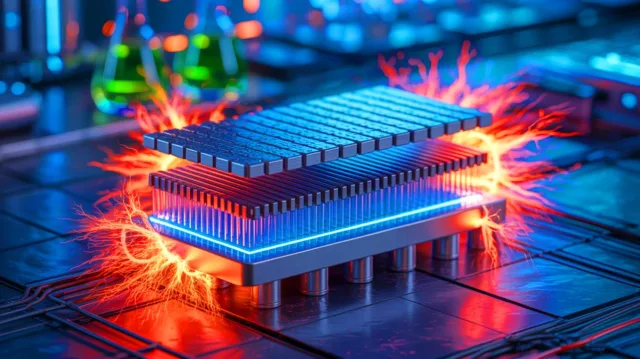
| IN A NUTSHELL |
|
In a significant advancement for clean energy technology, researchers in China have made a breakthrough in proton exchange membrane fuel cells (PEMFCs). By addressing a long-standing issue with oxygen flow and reducing the use of rare metals, these scientists have potentially rewritten the rules for fuel cell technology. The innovation, which utilizes triazine-based covalent organic frameworks (COFs), cuts oxygen resistance by an impressive 38 percent. This development not only promises to enhance power output but also reduces the dependency on platinum, a costly and limited resource. Such advancements are critical as the world continues to seek sustainable and economically viable energy solutions.
Revolutionizing Power Output and Material Use
The development of this new catalyst layer marks a turning point in fuel cell technology. Historically, achieving high power output has required expensive and complex solutions, such as oversizing systems or using platinum-heavy designs. However, the new method offers a more efficient path by enabling high current densities without the associated costs and complexities. By utilizing only 0.05 mg/cm² of platinum, the upgraded fuel cell achieves a peak power density of 1.55 W/cm². This efficiency is 1.3 times greater than that of traditional PEMFCs with similar platinum content, making it a commercially attractive option.
The core of this innovation lies in the interaction between COFs and Nafion, the ionomer used in PEMFCs. By creating a tightly organized mesh of mesopores, the technology directs oxygen precisely to catalyst sites, enhancing the efficiency of the platinum used. This targeted delivery not only boosts the power output but also reduces the operational costs associated with auxiliary systems, making it ideal for remote applications.
Implications for China’s Hydrogen Strategy
This breakthrough comes at a crucial time for China, as the nation aggressively pursues its hydrogen strategy to achieve net-zero emissions by 2060. The reduced dependency on platinum is particularly significant, given the metal’s high cost and geopolitical sensitivities. As a result, this innovation could play a pivotal role in advancing hydrogen-powered transportation and other clean energy initiatives within China.
Beyond the immediate benefits for fuel cells, the COF-enhanced interface offers potential applications across various electrochemical systems. Technologies such as electrolyzers, ammonia synthesis cells, and CO₂ reduction reactors could also benefit from improved oxygen movement, enhancing their efficiency and reducing operational complexities. This versatility underscores the broader impact of the research and its potential to reshape the clean energy landscape.
Industry Reception and Future Prospects
The industry has taken notice of this important development. Experts see it as a versatile design framework that could influence the construction of catalyst layers in a range of clean energy technologies. As the sector strives to cut costs and reduce material risks, while meeting ambitious climate targets, this discovery represents a tangible step forward.
The research, published in Angewandte Chemie International Edition, presents a promising direction for fuel cells, potentially transforming them from a niche technology into a mainstream energy solution. The innovation addresses critical barriers that have historically limited the competitiveness of hydrogen fuel cells, providing a new pathway for reducing costs and relying less on rare metals.
Potential Challenges and Next Steps
Despite the promising results, challenges remain. Scaling up this technology for widespread commercial use will require further testing and validation. Additionally, the global supply chain for triazine-based COFs and other materials must be developed to support large-scale deployment. Collaboration between researchers, industry stakeholders, and policymakers will be essential to navigate these challenges and realize the full potential of this breakthrough.
The implications of this research extend beyond China, offering hope for global clean energy efforts. As other countries look to decarbonize their economies, the ability to produce efficient and cost-effective fuel cells could play a crucial role in the transition to sustainable energy systems.
As the world grapples with the challenges of climate change and energy security, innovations like this fuel cell advancement are vital. Will this breakthrough be the catalyst needed to propel hydrogen fuel cells into mainstream adoption, and how might it influence global energy policies in the coming years?
This article is based on verified sources and supported by editorial technologies.
Did you like it? 4.5/5 (23)
Source: sustainability-times.com








